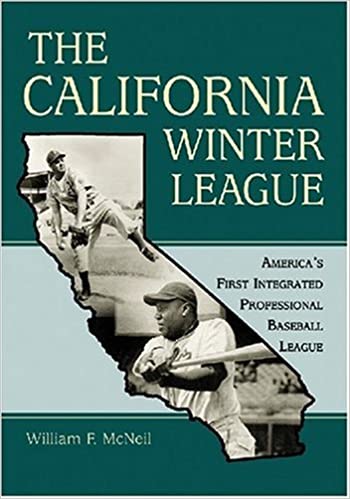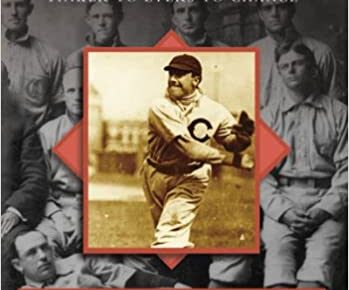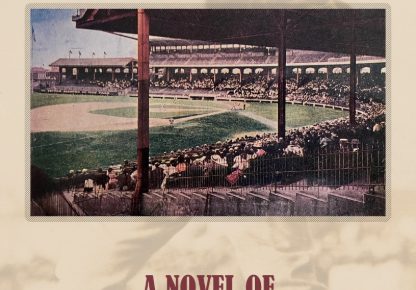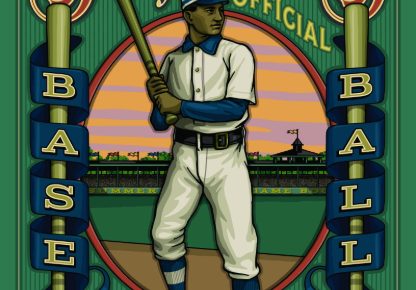A few years back I started a, now abandoned project, of calculating the true win-loss records of every team to ever play professional baseball. My methodology was to go league-by-league and in every season in a given league add in the playoff results to the regular season results. Once that was finished, presto, I could look at a team throughout their entire tenure in a league and have a true won-lost record as opposed to what you see when you visit most sites. The project got bogged down in the sheer minutiae of all the tabulations, but not until after I had finished all the nitty-gritty for the California Winter League.
Looking back on that work the CWL always interested me. It was the oddball league played during the fall and winter season in Southern California that featured players of color openly playing against white teams during a time when the rest of baseball, sans barnstorming, was segregated. Some years there were six teams playing and others there were only two. From about 1910 onward there was always at least one Negro Leagues team, sometimes two, but man, did they play way more games than their white counterparts. The CWL interested me so much because it didn’t make a whole lot of sense as a league.
When I came across William F. McNeil’s book, The California Winter League, I knew I had to read more about the league that fascinated me. After sitting on my bookshelf for over a year I finally turned to McNeil’s offering and I wasn’t disappointed, though I now have more questions that need answers.
The California Winter League is a great book for those who believe that baseball beyond Major League Baseball’s walls matters. McNeil tries to tip-toe around the legitimacy of the CWL at times and I’m of the belief that he didn’t need to take such a tactic. Baseball is more than just MLB and its affiliates. The CWL is interesting and legitimate precisely because it lived outside MLB’s stratosphere and did so both willingly and successfully. The book is at its best when it doesn’t try to justify the level of skill in the CWL but rather gets into the match-ups, the pennant races, and the careers these players built out of a small Southern California winter league.
The book’s main focus is, obviously, on the Negro Leagues stars who matched up with their white counterparts every year. Most of the players should be known to anyone who has ever had any sort of interest in the Negro Leagues, Knowing more about them is the key to the book and why at a certain point I realized I was reading multiple chapters a day despite my usual “chapter a day” routine. At first, I wasn’t sure if structuring the book in a granular game-by-game style worked. However, the deeper I got into the book the more I realized that though it was some tough trekking initially it was that style specifically that made me turn page after page. I was both learning of the history of the CWL and enraptured by that year’s Negro Leagues teams attempt to win another pennant.
The stylistic approach used by McNeil does mean the book is pretty light on backstory. That is the one area where I wish the book was meatier and told more beyond just the games. The way that White Sox Park II worked still puzzles me. Joe Pironne owned it but would sell it to a different Negro Leagues owner for a two-three year stint where they would own the park only to then sell it back to Pironne for him to then sell it to the next Negro Leagues owner coming into town. Why was that the set-up, how did it benefit all parties, and what did the general public think of the arrangement? For that matter, please, tell me way more about Pironne and the way he kept his league integrated in spite of constant pressure from Commissioner of Baseball Kenesaw Mountain Landis to not allow the Negro Leagues teams to play against white teams. The California Winter League was a great ride, but it did not go deep enough into the political and ideological formation and battles that surrounded the league.
My ultimate recommendation is to read The California Winter League. If you are a Negro Leagues fan or someone who likes unaffiliated baseball, then you should definitely check it out. Heck, if you’re a stathead who is interested in seeing stats for major league players that can’t be found on any online database currently in existence, The California Winter League is also for you. That’s not to say that McNeil’s work is perfect. It comes up short in more than a few areas and it is frustrating to leave a book about the CWL with more questions than I had to enter the journey. That being said, The California Winter League is still a book well worth your time and you should add it to your reading list.
Lead photo courtesy of Unknown – McFarland




